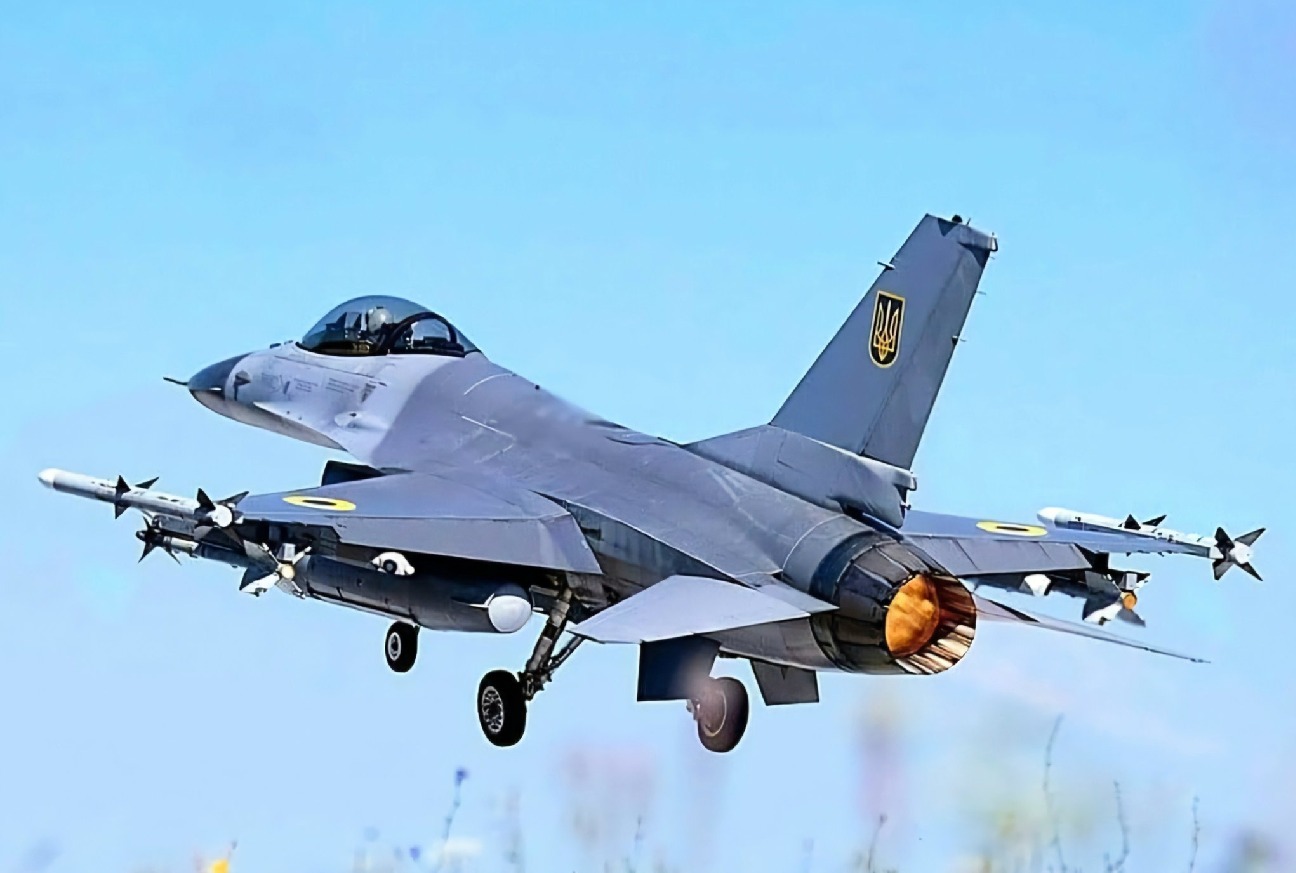The crash of the Ukrainian F-16 fighter jet on August 26, which resulted in the death of the pilot, Lt. Col. Oleksiy Mes, known by his call sign “Moonfish,” has yet to be determined.
The crash occurred during one of the largest Russian aerial attacks on Ukraine.
Ukrainian authorities and international experts, including those from the U.S., have been investigating the incident. To date, the investigation remains ongoing, and no definitive cause has been publicly confirmed.
US Commander’s Remarks
General James Hecker, the Commander of the U.S. Air Forces in Europe and Africa, has made several comments regarding the Ukrainian F-16 crash, although he has not provided a definitive cause.
According to Hecker, the U.S. is looking into the preliminary findings of the crash investigation to potentially modify the F-16 training program for Ukrainian pilots.
General Hecker’s statement, based on preliminary findings and the delay in releasing the finalized investigation findings, strongly suggests that friendly fire was not the cause of the accident.
Ukrainian politician Maryana Bezuhla’s claim, made shortly after the F-16 downing, that the F-16 might have been hit by a Patriot air defense missile was disinformation aimed at denying credit to Russian Forces.
Likely Cause
The possibility that the F-16 was downed by an air-to-air missile launched from a Russian fighter is remote. The Russian group strike using cruise missiles and long-range kamikaze drones on that day was targeted at central and western Ukraine.
The Ukrainian F-16 had taken to the air in response to the group strike, presumably to take down cruise missile and drone threats. As such, at the time of its shootdown, the F-16 was likely over West Ukraine, out of range of Russian fighters, even those armed with long-range missiles.
If friendly or adversary fire is not the reason, two other plausible reasons remain, i.e., pilot error or mechanical failure. It’s unlikely that a mechanical failure would have resulted in the loss of the pilot’s life or such a lengthy investigation.
The pilot error could have resulted in CFIT (Controlled Flight Into Terrain) or collision with the target missile or its debris.
A fighter with a capable and powerful radar can detect, track, and engage a low-flying cruise missile while flying at medium altitudes. A look-down, shoot-down attack requires the radar to have high processing capability to remove ground clutter.
The F-16 is a small aircraft with a small nose section. Considering the small aperture of its radar, its relatively low power output, and the possibility that it was engaging a stealth missile, it is quite likely that the Ukrainian pilot was unable to execute a look-down, shoot-down attack.
Under the circumstances, the pilot may have chosen to descend to the missile’s cruising altitude for an engagement. The pilot may also have expended his air-to-air missiles and gone down for a gun engagement.
F-16s “Sitting Ducks” For Russian MiG-31 Fighters? Putin Warns Of Consequences Over Fighting Falcons
Cruise missiles don’t just fly low; they often fly low through terrain to mask their approach from ground radar. Engaging a cruise missile flying through terrain at 200 ft is high-risk flying.
It’s interesting that Hecker, referring to the preliminary report, said, “Anything that comes out of that, any preliminary things, we’re taking a look at to develop into training, both in Denmark as well as the U.S., to see if there’s any changes that we need to make to the training to make sure that this doesn’t happen again.”

Commenting on the experience and training of Ukrainian Pilots, Gen. Hecker said, “It’s easier for brand-new pilots to fly the F-16… because they don’t have this other training in the back of their mind that it’s kind of hard to get rid of, and that’s why it takes time.”
The tendency of experienced pilots to revert to “old habits” or muscular memories under stressful conditions is sometimes referred to as regression.
While regression is a fact, experienced fighter pilots can convert to a different fighter type fairly easily and in much less time than pilots flying their first operational fighter. In the IAF, which operates many types of aircraft of different origins, conversion from one type to another is routine.
If chasing low-flying missiles is what happened, it may be attributed to poor discipline and training, not any baggage from flying different types earlier.
Cutting Through The Spin
US and European F-16 pilots have no experience locating, tracking, or engaging low-flying stealth missiles. They are likely not even aware of any F-16 limitations in look-down, shoot-down engagements of stealth missiles, having relied on AWAC vectoring for such engagements.
Ukraine does not have AWACS to provide cover to their F-16 pilots. Any attempt to use NATO AWACS operating over Poland or Romania would be highly escalatory. The lack of tanker support confines the short-range Ukrainian F-16 fighters to the Western part of Ukraine.
Conclusion
Defending the very limited role that Ukrainian F-16s have played so far, General Hecker said, “The pilots are new to it, so they’re not going to put them at the riskiest missions.”
The truth is, it’s not the pilots; it’s the aircraft.
The fact is that in Ukraine, without AWACS and tanker support, the single-engine, short-range F-16 of the 1970s has little role to play in operating against high-end, far-seeing, long-range weapons-armed adversary fighters.
Ukraine will have to evolve its own tactics to make its F-16s more effective. With time and, inevitably, some losses, Ukrainian F-16 pilots will become more adept at leveraging the platform.
However, the F-16 was never a wonder weapon, and it’s now too maxed out, airframe capability wise, to ever be so.
- Vijainder K Thakur is a retired IAF Jaguar pilot, author, software architect, entrepreneur, and military analyst.
- VIEWS PERSONAL OF THE AUTHOR
- Follow the author @vkthakur




